Benefits of Cork Flooring in Kitchens
Cork flooring offers numerous advantages that make it an excellent choice for kitchens. From its comfort to its environmental benefits, it’s a versatile flooring solution that meets the needs of modern homeowners.
- Comfort Underfoot: One of the standout features of cork flooring is its soft, cushioned feel. This makes it more comfortable to stand on for long periods, which is especially beneficial in a kitchen where you may spend hours cooking or cleaning. The natural elasticity of cork also reduces fatigue and strain on your feet and joints.
- Eco-Friendliness: Cork is a renewable and sustainable material. The bark of cork oak trees is harvested without harming the tree, allowing it to regenerate and be harvested again in the future. Choosing cork flooring is an environmentally responsible decision that reduces your carbon footprint.
- Insulation Properties: Cork is a natural insulator, providing both thermal and acoustic benefits. It helps keep your kitchen warm in the winter and cool in the summer, reducing energy costs. Additionally, cork absorbs sound, making your kitchen quieter and more peaceful.
- Durability: Despite its softness, cork flooring is surprisingly durable. It is resistant to dents and scratches, making it suitable for high-traffic areas like kitchens. With proper care, cork flooring can last for decades, making it a long-lasting investment for your home.
- Aesthetic Appeal: Cork flooring offers a unique, natural look that can enhance the aesthetic of your kitchen. It is available in a variety of colors, patterns, and finishes, allowing you to customize the look to match your style. The natural texture and grain of cork add warmth and character to the space.

Types of Cork Flooring for Kitchens
There are several types of cork flooring to choose from, each with its own unique features and benefits. Understanding the differences can help you select the best option for your kitchen.
Cork Tiles: Cork tiles are a traditional option that can be glued directly to the subfloor. They offer a wide range of design possibilities, as they can be arranged in different patterns and colors. Cork tiles are ideal for DIY enthusiasts who want a customizable flooring solution.
Cork Planks: Cork planks are similar to hardwood planks and are available in various widths and lengths. They often feature a click-lock system for easy installation, making them a convenient option for those looking for a quick and straightforward installation process. Cork planks are durable and provide a seamless look.
Floating Cork Flooring: Floating cork flooring is not attached to the subfloor but instead rests on an underlayment. This type of flooring is easy to install and can be a good option for kitchens with uneven subfloors. Floating cork flooring is available in both tiles and planks.
Prefinished vs. Unfinished Cork: Prefinished cork flooring comes with a factory-applied finish, which is more durable and consistent than a site-applied finish. Unfinished cork allows for custom staining and finishing on-site, offering more flexibility in achieving the desired look. Prefinished options are generally more convenient for kitchen installations.
Thickness and Wear Layer: Cork flooring varies in thickness and the thickness of the top wear layer. Thicker planks and a thicker wear layer offer greater durability and the possibility of refinishing in the future. Consider the level of foot traffic in your kitchen when choosing the thickness and wear layer.
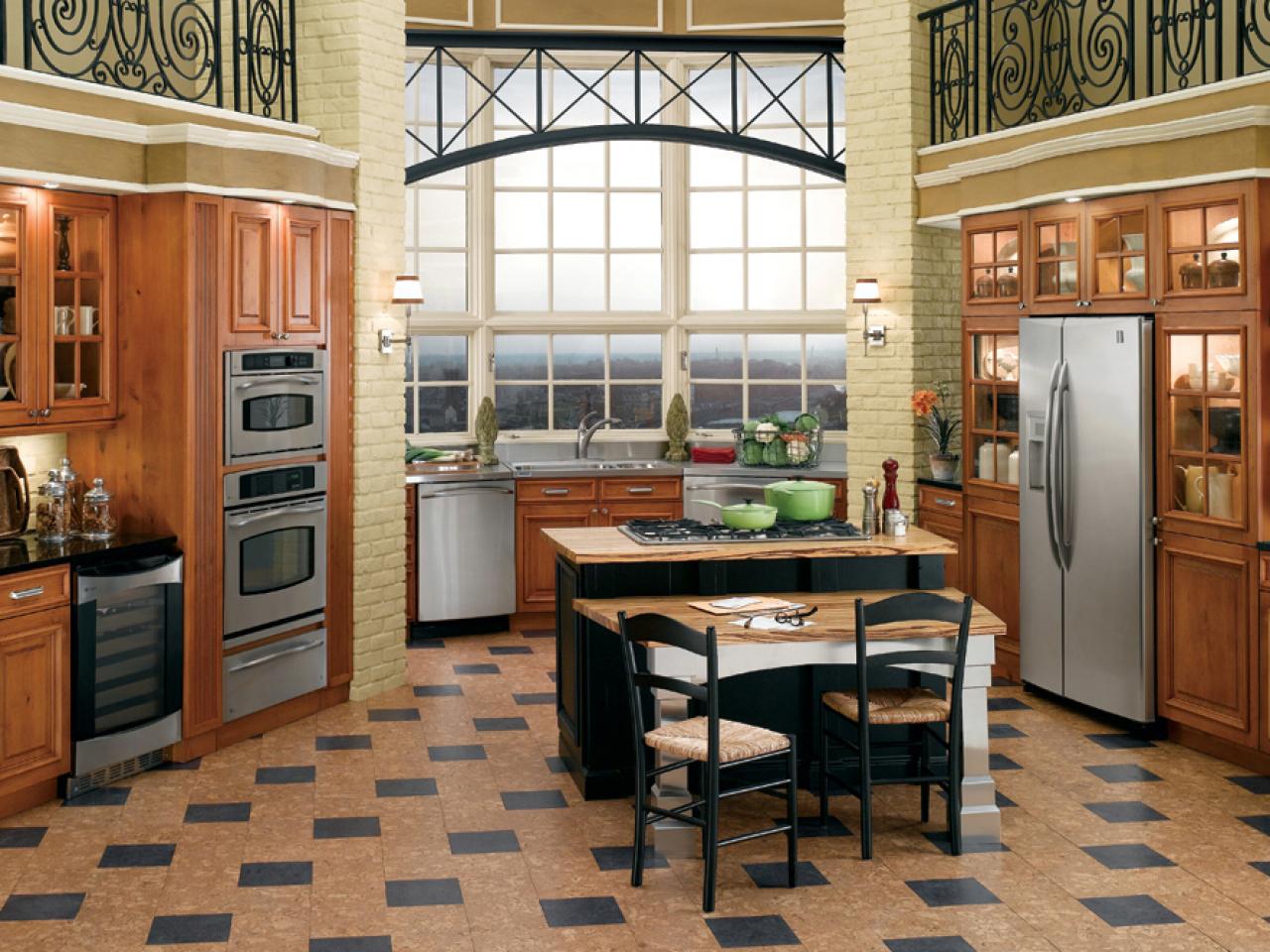
Design Considerations for Cork Kitchen Flooring
When selecting cork flooring for your kitchen, it’s important to consider various design elements to ensure it complements your space and meets your functional needs.
Color and Pattern: The color and pattern of your cork flooring can significantly impact the overall look of your kitchen. Lighter colors can make a small kitchen feel more spacious, while darker colors can add warmth and sophistication. Consider the existing color scheme of your kitchen when choosing the flooring.
Texture and Finish: Cork flooring is available in various textures, including smooth, embossed, and hand-scraped finishes. Textured finishes can add depth and character to the flooring, making it more visually interesting. Matte finishes are more forgiving of scratches and wear, while glossy finishes add a touch of elegance.
Layout and Pattern: Consider the layout and pattern of the flooring installation. Straight planks or tiles are the most common and can create a clean, streamlined look. Diagonal or herringbone patterns can add visual interest and make the kitchen feel more dynamic. Choose a layout that complements the overall design of your kitchen.
Compatibility with Underfloor Heating: If your kitchen has underfloor heating, ensure that the cork flooring is compatible with this system. Not all cork products are suitable for use with underfloor heating, so check the manufacturer’s specifications before making a purchase.
Edge Treatments: Some cork flooring options feature beveled edges, which create a more realistic wood or tile look. Beveled edges can also help hide minor imperfections in the subfloor. Consider whether you prefer a seamless or more textured look when choosing your flooring.
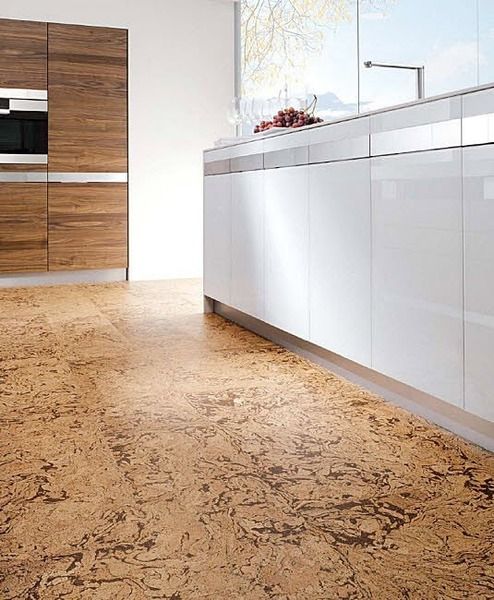
Installation Tips for Cork Kitchen Flooring
Proper installation is crucial for the performance and longevity of your cork flooring. Here are some tips to ensure a successful installation.
Prepare the Subfloor: The subfloor must be clean, dry, and level before installing cork flooring. Any imperfections in the subfloor can affect the stability and appearance of the flooring. Use a leveling compound if necessary to smooth out uneven areas.
Acclimate the Flooring: Allow the cork flooring to acclimate to the room’s temperature and humidity for at least 48 hours before installation. This helps prevent expansion or contraction after installation, which can lead to gaps or buckling.
Use the Right Underlayment: An underlayment can provide additional cushioning, sound insulation, and moisture protection. Choose an underlayment that is compatible with cork flooring and suitable for kitchen environments.
Follow the Manufacturer’s Instructions: Each type of cork flooring may have specific installation guidelines. Carefully read and follow the manufacturer’s instructions to ensure proper installation and avoid damaging the flooring.
Leave Expansion Gaps: When installing cork flooring, leave a small gap around the edges of the room to allow for natural expansion and contraction. This gap can be covered with baseboards or molding after installation.
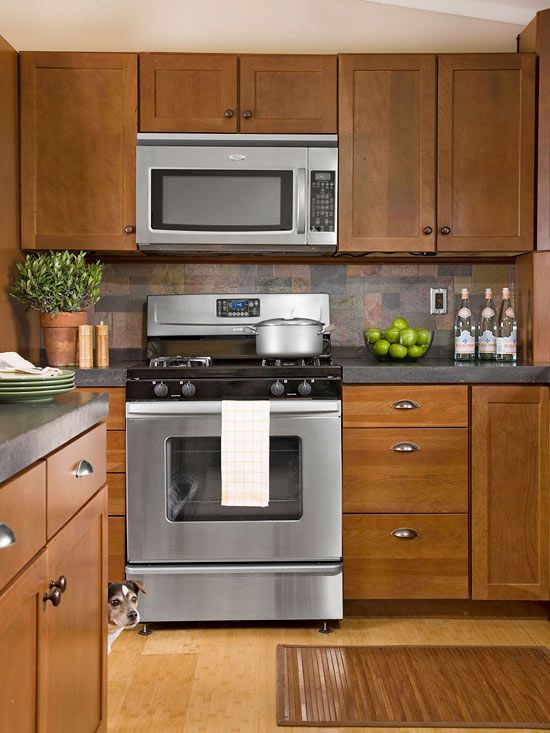
Maintenance and Care for Cork Kitchen Flooring
Regular maintenance is essential to keep your cork flooring looking its best and functioning properly. Here are some tips for maintaining and caring for your flooring.
Regular Cleaning: Sweep or vacuum the floor regularly to remove dirt and debris that can scratch the surface. Use a damp mop with a cork floor cleaner for routine cleaning, avoiding excessive water that can damage the cork.
Prompt Spill Cleanup: Clean up spills immediately to prevent staining and water damage. Use a soft, damp cloth to blot the spill rather than wiping, which can spread the liquid. Avoid using harsh chemicals or abrasive cleaners.
Protect from Furniture: Place felt pads or furniture coasters under the legs of chairs, tables, and other furniture to prevent scratches and dents. For heavy furniture, consider using furniture sliders to move items without damaging the floor.
Avoid High Heels and Sharp Objects: Avoid wearing high heels or shoes with sharp edges on cork flooring, as they can cause dents and scratches. Similarly, be cautious when moving heavy or sharp objects across the floor.
Reapply Finish as Needed: Over time, the finish on cork flooring may wear off. Reapply a protective finish or polish as needed to maintain the floor’s resistance to wear and tear. Follow the manufacturer’s recommendations for the best results.
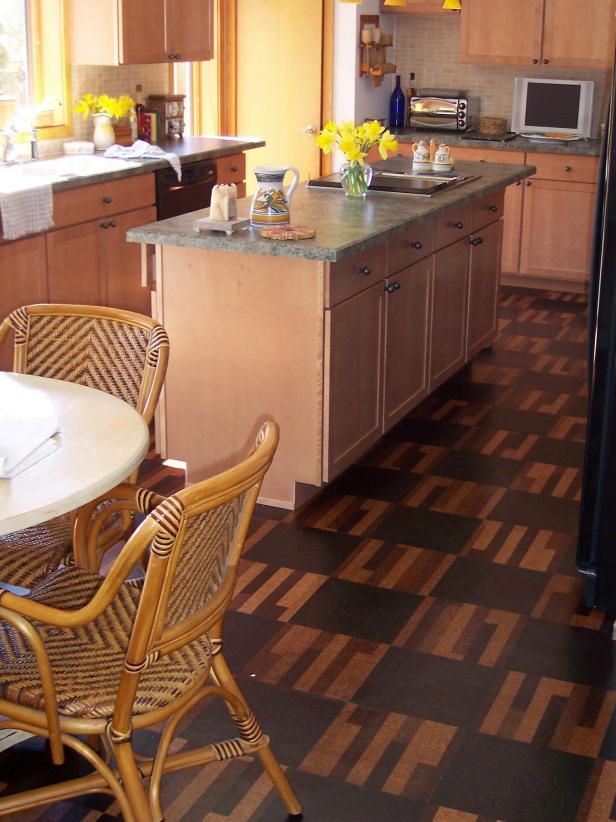
Greenhome Before and Afters – Cork Flooring Brightens Drab Condo
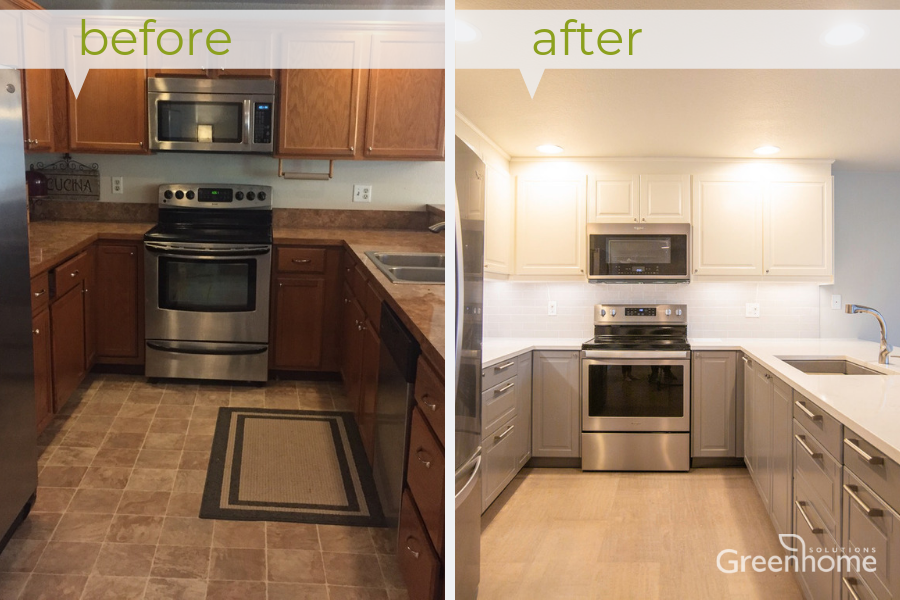
Cork Kitchen Flooring Is Perfect For Your Kitchen Cork flooring

Best Natural Floors for Kitchens

Cork Kitchen Flooring -Choosing the right floor for your kitchen

Globus Cork Eco-Friendly Flooring

Our Cork Floors – Update Report – Pretty Handy Girl
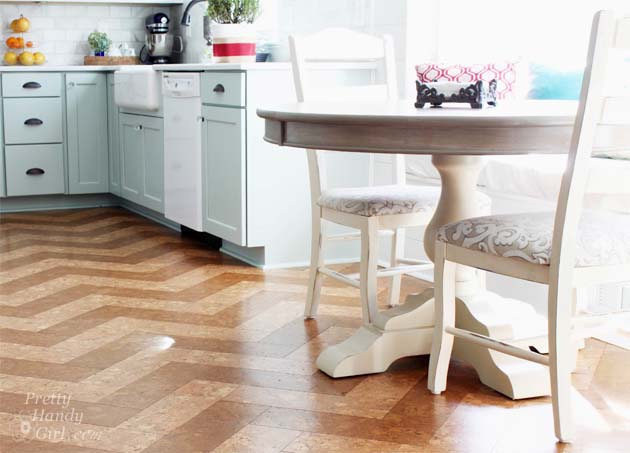
Related articles: